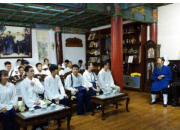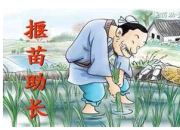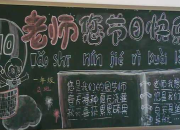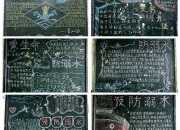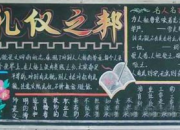英语必修5课件
时间:2021-08-31《英语必修5》是2011年南方出版社出版的`图书,作者是任志鸿。下面是小编为大家提供的关于英语必修5的课件,内容如下:
1. Target language 目标语言
重点词汇与短语
suggest, persuade, observation, contributions, achieve, devote ... to
2. Ability goals 能力目标
Enable the students to learn the way of persuasive writing and descriptive writing.
3. Learning ability goals 学能目标
Learn how to write a persuasive writing and a descriptive writing.
Teaching important points教学重点
Help the students to learn to write a persuasive writing and a report.
Teaching difficult points教学难点
How to write a report about a scientist and his / her job.
Teaching methods 教学方法
Task-based activities.
Teaching aids 教具准备
A computer and a projector.
Teaching procedures & ways 教学过程与方式
Step Ⅰ Presentation
Task 1: Summarize the way of writing a report.
T: Now class, if we want to write a report about a scientist, what contents should we include?
S1: The life of the scientist, such as his birth and death dates, his family, his education, his personality, his achievements and contributions, his key factors to his success.
T: Yes. You are right. And how do we make an outline about it?
S2: We should put the collected information under three headlines: life, achievements and key to success.
Task 2: Remind the students of the writing techniques and writing features of a report.
Show the following to the students.
Report
Formal language with few adjectives
No speech except quotations
Not emotional
Only one main character
Factual structured according to experimental method
Past tense and passive voice
Task 3: Summarize the way of persuasive writing.
T: You know if we want to persuade sb, we always want to reason with him or her. We must develop our own ideas and provide some evidence to support our ideas so there are always three steps to persuade somebody else to change his or her point of view. Can you point out what the three steps are?
S1: I think the first is to give your opinion and idea.
S2: The second is to give the reasons and evidence to support your idea.
S3: The third is to make a conclusion.
Show the following to the students.
A persuasive writing
Formal or informal, vivid use of language
Speech to show feelings, reactions, etc
Emotional or not emotional to describe feelings and facts
Only two main characters
Factual or imaginative based on fact
Reason and persuade step by step
Present tense
Then ask the students to write a short letter as required in Exercise 3.
A sample version:
Dear Nicolaus Copernicus,
I am a student studying history and I would very much like to read your new theory about the solar system. I hope you will publish it for several reasons. I understand the problems with the present theory. The way the planets move is not what you would expect if the earth was the centre of the universe. It is also odd that the brightness of some stars seems to change. So I agree with you that we need new theory.
I know your observations have been very carefully carried out over many years. Now you must have the courage to publish them. Science can never advance unless people have the courage of their beliefs. I know you worry about what will happen if you publish your new theory. No matter how people oppose it, time will show if your ideas are right or wrong.
So I hope you can publish your new theory.
Step Ⅱ Writing
Ask the students to write a report about a scientist.
Sample versions (见附件3, 4, 5)
Step Ⅲ Homework
Ask the students to do the Project on page 47.
附 件
1. How to do a science research
A science project is an investigation using the scientific method to discover the answer to a scientific problem. Before starting your project, you need to un derstand the scientific method. This section uses examples to illustrate and explain the basic steps of the scientific method. The scientific method is the “tool” that scientists use to find the answers to questions. It is the process of thinking through the possible solutions to a problem and testing each possibility to find the best solution. The scientific method involves the following steps: doing research, identifying the problem, stating a hypothesis, con-ducting project experimentation, and reaching a conclusion.
Research
Research is the process of collecting information from your own experiences, knowledgeable sources, and data from exploratory experiments. Your first research is used to select a project topic. This is called topic research. For example, you observe a black growth on bread slices and wonder how it got there. Because of this experience, you decide to learn more about mold growth. Your topic will be about fungal reproduction. (Fungal refers to plant-like organisms called fungi, which cannot make their own food, and reproduction is the making of a new offspring.) CAUTION: If you are allergic to mold, this is not a topic you would investigate. Choose a topic that is safe for you to do.
After you have selected a topic, you begin what is called project research. This research is to help you understand the topic, express a problem, propose a hypothesis, and design one or more project experiments — experiments designed to test the hypothesis. An example of project research would be to place a fresh loaf of white bread in a bread box and observe the bread over a period of time as an exploratory experiment. The result of this experiment and other research give you the needed information for the next step — identifying the problem.
Problem
The problem is the scientific question to be solved. It is best expressed as an “open-ended” question, which is a question that is answered with a statement, not just a yes or a no.
Hypothesis
A hypothesis is an idea about the solution to a problem, based on knowledge and research. While the hypothesis is a single statement, it is the key to a successful project.
All of your project research is done with the goal of expressing a problem, proposing an answer to it (the hypothesis), and designing project experimentation. Then all of your project experimenting will be performed to test the hypothesis.



